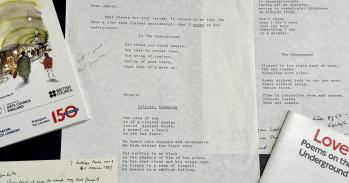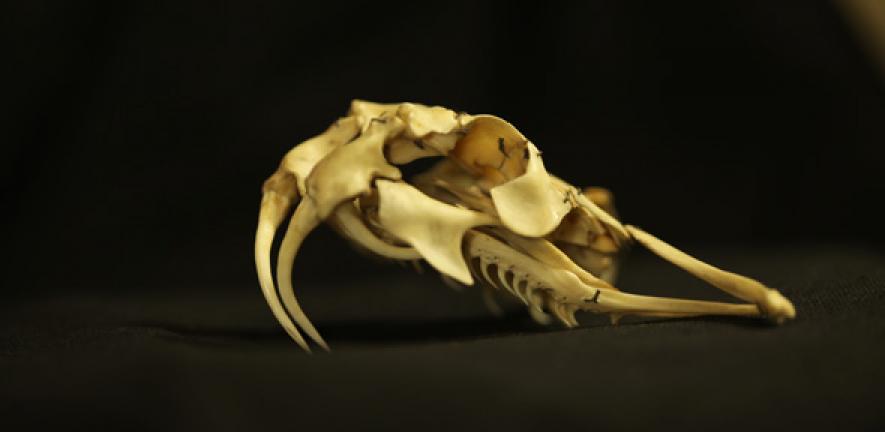
The Cambridge Animal Alphabet series celebrates Cambridge's connections with animals through literature, art, science and society. Here, V is for Venomous Snake: an animal that has long evoked fear and curiosity, but is revealing important clues for the development of treatments for some devastating conditions.
The Cambridge Animal Alphabet series celebrates Cambridge's connections with animals through literature, art, science and society. Here, V is for Venomous Snake: an animal that has long evoked fear and curiosity, but is revealing important clues for the development of treatments for some devastating conditions.
Weaponising is the term used describe the way in which snakes convert a substance into venom – without poisoning themselves
Jim Huntington
Scroll to the end of the article to listen to the podcast.
Recent reports of a world shortage of anti-venom have drawn attention to the dangers of snake bite, especially in rural areas of developing countries where many people work in the fields, often without shoes to protect them.
Although most of the world’s 3,000 or more snake species are not venomous, several hundred species are. Among them is the Australian brown snake (Pseudonaja textilis). Judged to be the world’s second most venomous land snake (the most venomous is the black mamba), it thrives in the populous eastern side of the country. The brown snake only attacks humans as a last resort but, if untreated, its bite can prove fatal.
Snakes store venom in glands in their mouths and deliver it into their victims through hollow fangs. For many years, scientists thought that snakes made venom by modifying the proteins present in their spit but not elsewhere in their bodies. This argument made sense because snake spit contains substances that enable them to break down and digest their prey.
Recent research suggests a different picture: the vast majority of the proteins and enzymes found in venoms are very similar to substances found in other parts of snakes’ bodies – such as their livers and digestive organs. The genes that control the production of these substances in snakes become activated in the salivary glands where they produce venoms.
“Weaponising is the term we use to describe the way in which snakes like the Australian brown convert a protein utilised for their own biology into a toxin – without poisoning themselves. In some cases snakes hijack their own clotting mechanisms to make venom that, once injected, causes widespread consumption of clotting factors, microthrombosis in organs and systemic bleeding,” says Professor Jim Huntington, a principal investigator at Cambridge Institute for Medical Research (CIMR).
“By understanding more about the weaponised proteins, we can learn more about an essential attribute of blood, its ability to clot when needed – in humans as well as snakes.”
The focus of Huntington’s lab is the development of a detailed understanding of the regulatory mechanisms that determine haemostatic balance – the balance between bleeding and thrombosis. It is expected that such information will inform the development of therapies for the prevention and treatment of diseases such as haemophilia, deep vein thrombosis, pulmonary embolism, heart attack and stroke – all of which are devastating conditions.
Snake venom offers a route to a better understanding of the haemostatic system. In 2013, Huntington and colleagues published research that revealed the crystal structure of the prothrombinase complex from the venom of the brown snake. This complex is quite similar to human prothrombinase which converts prothrombin to thrombin, the final step in the blood coagulation cascade. An excess production of thrombin causes thrombosis, and insufficient production of thrombin results in bleeding.
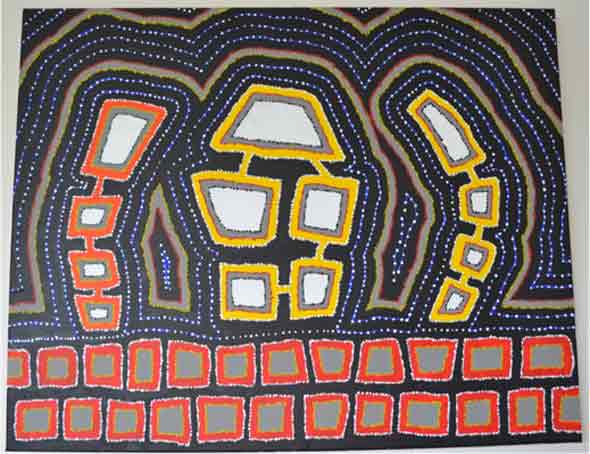
The crystal structure of brown snake venom enabled Huntington’s lab to gain new insights into the architecture and mechanism of the prothrombinase complex. Work is ongoing to determine how the snake’s prothrombinase relates to human prothrombinase and the intrinsic Xase complex (the proteins that activate coagulation factor X). Similar research from the Huntington lab has recently led to the creation of a new drug candidate for the treatment of thrombosis; ‘ichorcumab’ is currently in preclinical development as an antithrombotic agent that does not cause bleeding.
Only in the last 50 years have scientists begun to explore the potentially positive contribution of venoms to medicine. For many hundreds of years, snakes have been numbered among the most dangerous creatures on earth – to be avoided at all costs – and snake venom has long evoked fear and curiosity. Before the development of the first anti-venom at the Pasteur Institute in French Indochina in the 1890s, a bite from a venomous snake could mean death. Even today, the annual global death toll from snake bites is conservatively estimated at 20,000, and could be as high as 94,000.
PhD student James Hall (Department of History and Philosophy of Science) is looking at the serpentine narratives that unfolded during British involvement India from the later 18th century, initially under the rule of the East India Company and then under the Crown Raj from 1858. His research explores the ways in which moral attitudes to snakes informed attempts to describe and categorise them and shaped early attempts to assess the nature and effects of venom on human and other animal bodies.
Hall’s source materials are scientific books and papers, newspapers and periodicals, travelogues, and government archives from Britain and India, as well as the literature of the colonial world. A famous example of the latter is Rudyard Kipling’s short story Rikki-Tikki-Tavi from The Jungle Book (1894). It charmingly anthropomorphises the contest between good (in the character of the valiant mongoose Rikki) and evil (the deadly cobras Nag and Nagaina), with the drama taking place in the home of a middle-class British family living in India. Rikki’s bravery saves the innocent boy Teddy from a fatal snake bite.
“Snakes loomed large in the imperial imagination. Kipling’s story is typical of how snakes were typecast as villains in Victorian fiction. The cobras embody recurrent fears about the invasion of the supposedly hostile Indian environment into domestic spaces,” says Hall. “Snakes in India actually harmed very few Europeans, but when new statistical data revealed something of the extent of indigenous deaths due to snake bite, the problem became a challenge for a benevolent science as part of the rhetoric of the ‘civilising mission’.”
Humans and other primates are believed to have evolved an instinctive revulsion for snakes. This innate fear is reinforced by key narratives in the Bible, which remained a key authority on animals in the 19th century. In the creation story, the serpent wreaks havoc in the Garden of Eden by craftily tempting Eve to eat an apple from the Tree of Knowledge. Among the hundreds of pictorial representations of this story is German artist Johann König’s painting, Adam and Eve in Paradise (circa 1629), in the Fitzwilliam Museum.
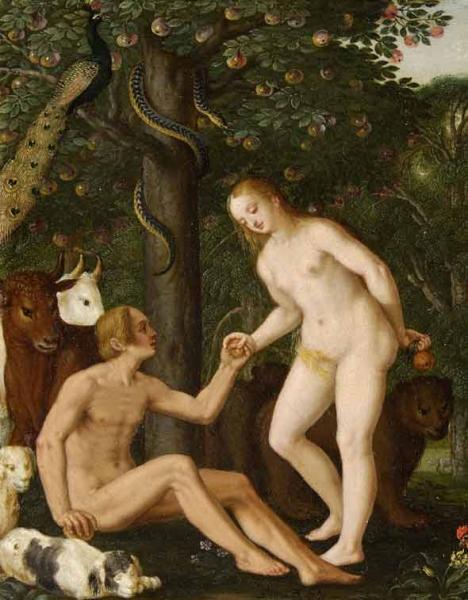
“König’s snake shows some similarity to a European viper or adder. In such scenes the serpent is often seen coiled around the tree, watching on. Earlier depictions sometimes show the serpent in a more humanoid form, with a head, torso and upper limbs.
"The original physical form of the serpent in the Garden was a source of debate given that it was only afterwards cursed by God to crawl on its belly,” says Hall.
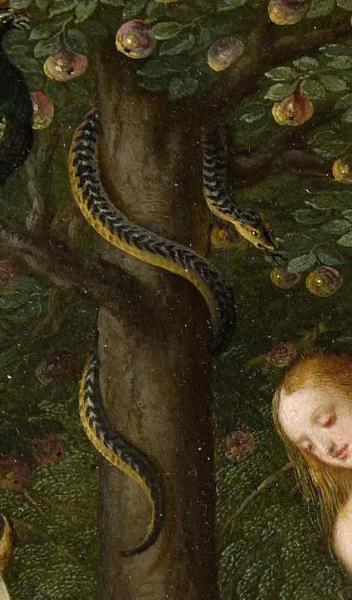
“The poor biblical reputation of snakes contributed to their unpopularity as objects of scientific study. But there were also practical obstacles to snake science relating to the collection, transportation, and preservation of snakes. Research into the effects of venom involved carrying out technically difficult and controversial experiments.”
From the 1820s, living snakes were collected to exhibit in newly-opened zoos in Britain. They had earlier appeared in travelling menageries. Snake specimens in alcohol, snakeskins and prepared skeletons had been mainstays of natural history collections from much earlier, but the number of species increased dramatically with imperial expansion in the 19th century.
At the Zoological Society’s gardens in Regent’s Park in London, visitors had the opportunity to see venomous snakes face-to-face at the new reptile house, which opened in 1849. Thousands flocked to see the snakes, including men of science such as Charles Darwin, who took the opportunity to carry out research into animal emotions.
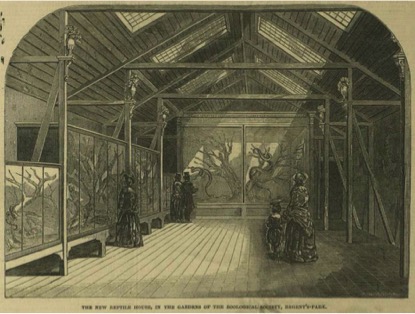
The reptile house was conceived and marketed as an educational resource, but many people visited it for the thrill of seeing (and provoking) dangerous snakes up close, and ended up confirming their own preconceived ideas. Tragedy struck in 1852 when a keeper of reptiles, Edward Gurling, was bitten on the nose by a cobra and killed. The Zoological Society moved quickly to reassure the public of the safety of the establishment, and the keeper was described as being drunk from a night of gin drinking and acting with “rashness and indiscretion”.
“The death of Gurling was an important moment for scientific research into venomous snakes,” says Hall. “It led to an upsurge in interest in venomous snakes and renewed efforts to find an antidote to their venom in the colonies. Correspondents wrote to The Times offering up their own treatments for snake bite guaranteed by time spent in Africa and on the subcontinent. But it would be another four decades before the first anti-venom was developed.”
Next in the Cambridge Animal Alphabet: W is for an animal that made the journey from a beach in Sussex, to pride of place in the Museum of Zoology.
Have you missed the series so far? Catch up on Medium here.
Inset images: Aboriginal painting of the prothrombinase complex (Tom Murray-Rust); Adam and Eve in Paradise by Johann König (Fitzwilliam Museum); Detail from Adam and Eve in Paradise by Johann König (Fitzwilliam Museum); Illustration of the Zoological Society’s reptile house (Illustrated London News, 2 June 1849).

The text in this work is licensed under a Creative Commons Attribution 4.0 International License. For image use please see separate credits above.

